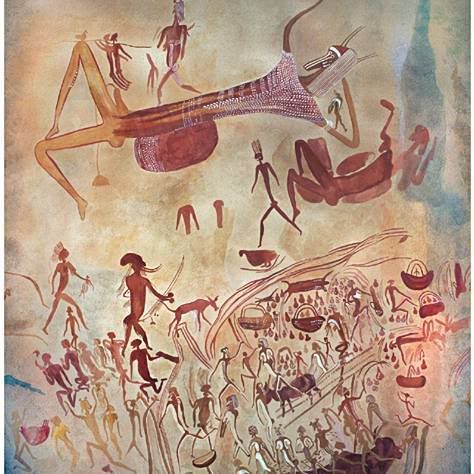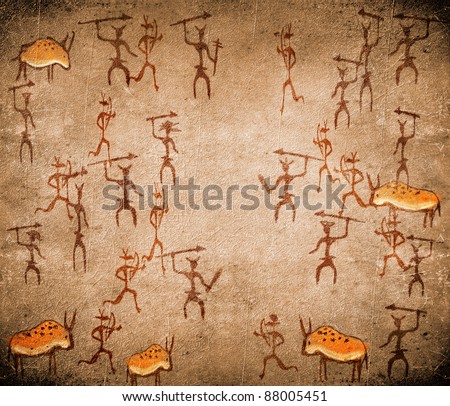BASQUE
"It’s worthwhile to note that gender
doesn’t have to be masculine, feminine, etc. It can also mean animate or
inanimate in certain languages such as Basque."
http://colourlessgreenlinguistics.wordpress.com/2013/04/04/grammatical-gender-or-why-mascara-is-masculine/
"Instead of distinguishing between
masculine, feminine and neuter nouns, declensions are determined by
whether the noun is animate or inanimate, has a definite or indefinite
article, and whether it
ends in a vowel or a consonant. Which nouns are
animate and which are not is not always apparent; parts of a body are
considered inanimate, but a table is animate. ... For animate nouns,
the "_Z" indicates the
indefinite article; for inanimate nouns, the definite article.
"Verbs agree with their subjects in
person, number, and animacy."
http://digitalcommons.butler.edu/cgi/viewcontent.cgi?article=3825&context=wordways
"Do-it-yourself Basque case machine! Please specify whether the noun refers to a living (conscious, animate)
being or an inanimate object."
http://person2.sol.lu.se/ArthurHolmer/baskase.html
"In Basque there are two classes, animate
and inanimate; however, the only difference is in the declension of
locative cases (inessive, locative genitive, adlative, terminal adlative,
ablative and directional ablative)."
http://en.wikipedia.org/wiki/Grammatical_gender
"Therefore I think about the gender
marking in personal agreement slots of Basque verbs as subclasses of
animate class. In this respect, it is not grammatical "gender" but natural
"sex". Sex in 2nd-person utterances is often expressed even in languages
which have no gender marking (in 2nd person or at all) by supragrammatical
means, cf. |Come here, _boy_|, |How are you, _girls_|.
"Basque makes inanimate vs. animate
distinction in another
connection. Before locative suffixes animate noun phrases are
marked by a suffix |ga|, but |ta| is inserted in case of inanimate
noun phrases that have no singular determiner (inanimate noun
phrases with singular determiner take zero suffix)."
http://archives.conlang.info/shae/zenje/daelzialkhoen.html
"Firstly, locational cases treat phrases headed by an
animate noun differently from phrases headed by an inanimate noun. ... As is pointed out by Laka (1995: 66), it is important
to bear in mind that "what counts as an animate noun in the grammar of
Euskara [Basque] is not determined by modern biology." Although in most
cases biological animate entities coincide with entities treated as
animate in Basque grammar, there are a few exceptions. This is the case
with reciprocal
elkar,
for instance, which is always considered animate even in those cases where
the noun it refers to designates an inanimate entity?"
http://www.unizar.es/linguisticageneral/articulos/Ibarretxe-BelgianJL-04.pdf
"On the one hand, they treat differently animate
nouns and inanimate
nouns. On the other hand, they treat inanimate phrases headed by singular
determiners differently from all others. In both cases, the distinction
involves the addition of a morpheme: ga in the case of animates, ta in the
case of inanimate phrases lacking a singular determiner."
http://www.ei.ehu.es/p289-content/eu/contenidos/informacion/grammar_euskara/en_doc/cases_postpositions.html#3.3.1.
Animacy: the morpheme ga. Locat
"French has two grammatical genders,
Russian has three (or rather, two and neutral) plus Animate and Inanimate,
Basque doesn't have genders, but has different rules for animate and
inanimate nouns."
http://forum.frontrowcrew.com/index.php?p=/discussion/9163/magicians-language-learning-rpg/p1
"Locational cases form a special group
within Basque cases not only because they share a common reference to
space, but also because they do not behave exactly in the same way as the
rest of
the paradigm. Their main differences are the following: (i) distinction
between animate and inanimate noun phrases (NP), (ii) lack of article –a in the definite
singular form, and (iii) presence of infix –ta- in non-singular inanimate
NPs."
http://ftp.icsi.berkeley.edu/ftp/pub/techreports/2001/tr-01-006.pdf
ALGONQUIN LANGUAGES
"Features common to all Algonquian
languages are the need for animate/inanimate gender and proximities, for
both nouns and verbs."
http://en.wiktionary.org/wiki/Wiktionary_talk:About_Algonquian_languages
"There is a distinction in Algonquin
between animate and inanimate nouns. ... There are different word forms
depending on whether the subject is animate or inanimate. All people and
animals are considered animate in Algonquin, but for other nouns, you just
have to remember whether they are animate or not—you
probably wouldn't be able to guess that "feather" is animate and "river"
is inanimate in Algonquin any more than you would be able to guess that
"feather" is feminine and "river" is masculine in Spanish."
http://www.native-languages.org/algonquin_animate.htm
"All Algonquian languages have two
genders, traditionally referred to as animate and inanimate. Nouns are
assigned to the two genders on the basis of semantic criteria; the
classification is however not fully consistent as the assignment criteria
allow for a small number of exceptions."
http://www.staff.amu.edu.pl/~kilarski/research/download/al.pdf
"Verbs are divided into four classes: transitive verbs with an animate
object (abbreviated "TA"), transitive verbs with an inanimate object
("TI"), intransitive verbs with an animate subject ("AI"), and
intransitive verbs with an inanimate subject ("II")."
https://en.wikipedia.org/wiki/Algonquian_languages
"Algonquian languages distinguish between
animate and inanimate nouns. ... Assignment of Cree words to a noun class
sometimes seems to lack any natural motivation. The word ospwākan ‘pipe’,
for instance, belongs to the animate class even though it does not denote
a living thing. This practice is similar to gender classification in
English, which can place a few inanimate words (such as those referring to
ships and countries) in the feminine class. ... In Blackfoot, animate and
inanimate nouns are distinguished through inflectional endings not only in
the plural (-iksi ‘plural animate’ vs. -istsi ‘plural inanimate’) but also
in the singular (-wa ‘singular animate’ vs. -yi ‘singular inanimate’)."
http://www.ucalgary.ca/dflynn/inflecthttp://www.ucalgary.ca/dflynn/inflect
"Algonquian nouns are marked for the following categories: Nouns belong to
two classes that roughly correspond to animate and inanimate. In some
cases, these categories appear to be quite arbitrary. For instance,
besides including persons and animals, animate nouns may also include
spirits, trees, some fruits, some body parts, and household utensils.
Languages differ from each other in the way they assign nouns to these
categories. A noun may be animate in one language and inanimate in
another."
http://awl-demo.com/algic-language-family
"Plural animate nouns, end with “g”
ag, yag, wag, ěg, ňg, eg
Plural inanimate nouns, end with “n” an, ňn, ěn"
http://www.thealgonquinway.ca/publications/EBookSeriesBook1_126_00.pdf
"Animate nouns in plural take an ending
/-ag/, but inanimate nouns - /-an/. A vowel in the ending can be
different, but consonants /-g/ and /-n/ always indicate the gender. ...
Noun gender is very important. Depending on this category different verbs
and demonstrative pronouns are used – animate or inanimate. You can see
from the example that with an animate noun bakwezhigan (bread) an animate
verb "bring" and a pronoun "that" are used, but with an inanimate noun
mazina’igan (book) – an inanimate verb and a pronoun:
"Biish a'aw bakwezhigan. - Bring me that
bread. (animate)
Biidoon i'iw mazina'igan. - Bring me that book. (inanimate)"
http://weshki.atwebpages.com/gram_notes.html
In The Tribes and the States,
W. J. Sidis wrote the following.
2. The
Cro-Magnons. In connection with the pre-history of the red peoples, an
important fact is that there were red men at one time in Europe as well as in
America. The most persistent of Europe's cave-dwelling races were the
Cro-Magnons, who were physically very much like the red race, and are even shown
by some cave paintings in Western Europe as colored red and wearing the same
sort of top-feathers as were common among the eastern Algonquins of North
America. The Cro-Magnons were mainly located near the Atlantic regions of
Europe, though found over most of Europe and northern Africa. The densest
Cro-Magnon population appears to have been around the head of the Bay of
Biscay, where there is still spoken a language called Basque, which is totally unrelated
to any language on earth, but whose general structure resembles only the
red-race languages of America. That this type of language must have once
been general through most of Europe is indicated by European place-names;
so that, apparently, the language spoken in Europe before the advent of
the Aryans must have been one of red-race structure.
.pdf
.jpg)


Sidis Archives Home Page
 |